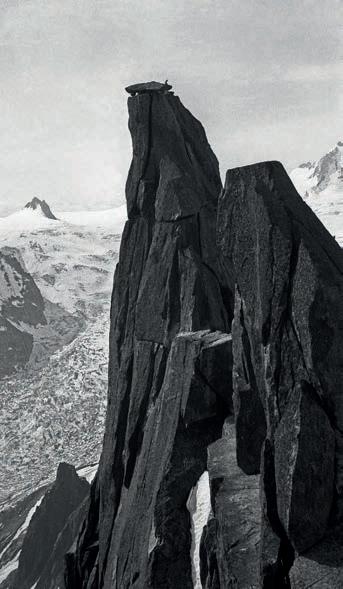
2 minute read
Harry Gruyaert [New revised edition]. Introduction
Charlotte Perriand
PHOTO POCHE
12.5 × 19 cm 176 pages 69 black and white photographs softback photo poche n° 170 october 2022 retail price: 13.90 €
Damarice Amao holds a PhD in art history and is a specialist in photography. She works as a curatorial attaché at the photography department of the Centre Pompidou. Her research focuses especially on avant-garde photography and surrealism. In 2021, she curated the exhibition Charlotte Perriand. Comment voulons-nous vivre? Politique du photomontage, presented at the Rencontres d’Arles, the catalogue of which was published by Actes Sud. A freelance artistic director and editor, Emmanuelle Kouchner teaches publishing at Paris 1 Panthéon-Sorbonne University. Of note, she has directed the work Charlotte Perriand. Comment voulonsnous vivre? Politique du photomontage (Actes Sud, 2021).
Texts by Damarice Amao and Emmanuelle Kouchner
Although better known for her work as an architect, urban planner and designer, in her career, Charlotte Perriand developed her own “photographic parenthesis” from the late 1920s to the late 1940s. Throughout her travels, she constantly photographed the world she saw. While her overall approach to photography should be considered in the context of the 1920s, when the avant-garde took hold of the medium to create a modern language, Charlotte Perriand developed a more intuitive practice, recording forms that grabbed her attention. It is this perspective on the world that led her to distance herself from the functionalist architecture of Le Corbusier to defend a more human form of modernism. To her, the human is the root of all reflection, which is what makes her work so unusual. From 1933, Charlotte Perriand developed a passion for art brut. She photographed the cracks in wood, rocks with surprising shapes, and pieces of wood that she found. Nature is portrayed in all its primordial beauty, creating “objects of poetic reaction”, as Le Corbusier said. Charlotte Perriand’s humanism also drove her onto a different terrain: that of political commitment. She used her photography to support the socialist cause of the Popular Front and to denounce the poverty of the slums in Paris’s suburbs. In her hands, photography became a discursive weapon in a battle to improve her contemporaries’ quality of life. Focussing on the photographic work of Charlotte Perriand opens up new perspectives for the history of the medium in itself. She is one of those “non-photographers” who deploys imagery as a hegemonic and transversal language of communication.











